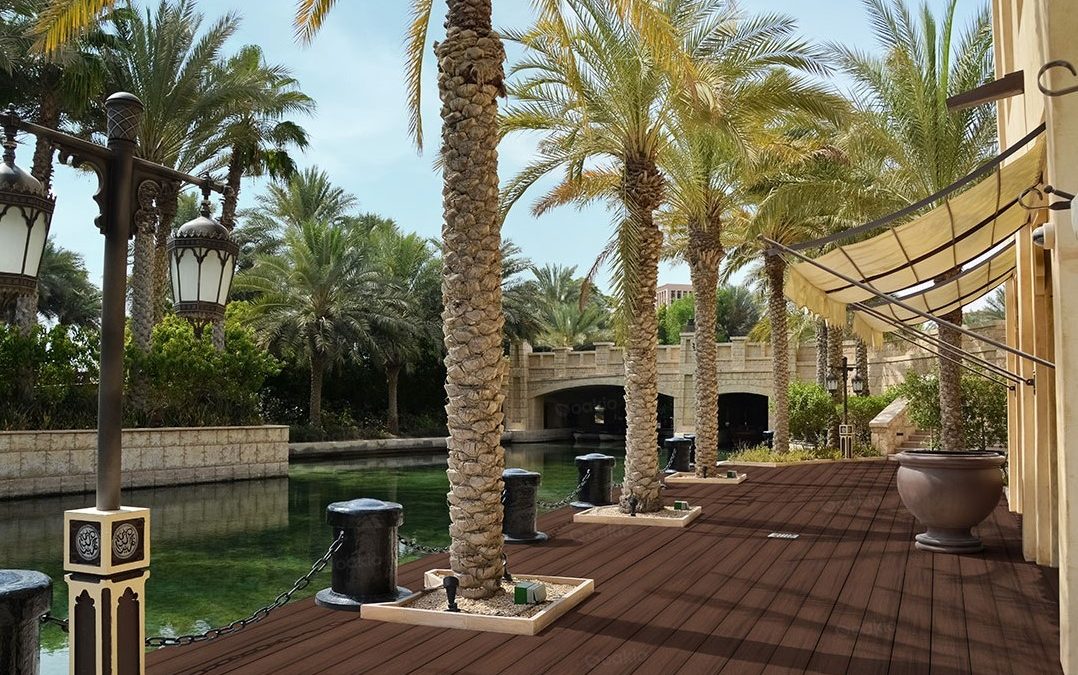When it comes to modern architecture, adaptability and design are key. That’s where Wood-Plastic Composite (WPC) cladding shines. A blend of aesthetics and functionality, WPC cladding is swiftly becoming a staple in contemporary building projects.
Understanding WPC Cladding
Diving right into the details, let’s examine what exactly WPC cladding is and how it’s composed.
Definition and Composition
If you prefer the full name, WPC cladding or Wood-Plastic Composite cladding is an innovative type of material. It combines the best of two worlds—wood fibers or flour and thermoplastics like PVC, PE, or PP. This combination creates a durable and eco-friendly composite material.
Imagine blending wood elements with strong thermoplastics. The result? A sturdy piece of composite that can withstand time and weather while being kind to Mother Earth—that’s WPC for you! Additives such as UV stabilizers, colorants, and fire retardants enhance the composite’s properties further.
Design Versatility
WPC cladding isn’t just about durability; it’s also about the art of possibilities.
Range of Textures and Colors
Imagine a palette filled with colors and textures that can be mixed and matched to create a unique façade. That’s WPC cladding for you. It comes in various colors, from natural wood hues to vibrant tones, allowing architects to add character to their designs. The textures vary too – smooth, rough, or embossed – each creating a different visual effect.
- Variety of colors: Natural wood hues, vibrant tones.
- Selection of textures: Smooth, rough, or embossed.
Customization Options
I once had an architect friend who wanted something truly original for his project. He turned to WPC cladding because it offered customization options beyond traditional materials. WPC cladding fits the bill perfectly, whether you’re after specific shapes or sizes or have particular color preferences.
- Specific shapes and sizes: Flexibility in design.
- Color preferences: Wide range available.
Interior and Exterior Use
WPC cladding’s versatility doesn’t stop at exteriors; it’s equally effective inside buildings! Its adaptability is remarkable, from wall paneling in living rooms to ceiling applications in commercial spaces. Plus, given its robustness against environmental factors like moisture and UV rays, it is a reliable indoor and outdoor choice.
- Wall paneling: Ideal for home interiors.
- Ceiling applications: Suitable for commercial spaces.
Applications in Modern Architecture
Let’s investigate how WPC cladding adapts to various applications, from residential homes to commercial buildings and public spaces.
Residential Homes
Modern homes often feature open floor plans that demand flexible materials. Here’s where WPC cladding shines—it creates a seamless transition between indoor and outdoor areas. Plus, with the trend of large windows for natural light, this composite material offers a sturdy exterior finish that harmonizes perfectly with the sunlit ambiance.
Commercial Buildings
Commercial structures require high performance and aesthetic appeal. I’ve noticed that architects turn to WPC clacking, as it withstands heavy traffic while maintaining its appearance over time. Given its range of colors and textures, it also caters to diverse design needs, meaning it can match any corporate branding or design theme.
Public Spaces
Public areas like parks or outdoor malls need durable yet attractive materials due to constant exposure to weather conditions. I’ve seen WPC cladding stand up well in such situations because of its ability to resist moisture and UV rays, ensuring longevity without compromising looks.
Installation Tips
Let’s investigate some handy tips for installing WPC cladding, focusing on professional installation and do-it-yourself methods.
Professional Installation
Professional installation of WPC cladding is all about precision and expertise. Professionals have the know-how to ensure a flawless finish and long-lasting performance. They use specialized tools to fit each panel perfectly, reducing gaps that could compromise the cladding’s durability. From my experience, they also advise on optimal positioning, considering factors like exposure to sunlight and rainfall. Remember, though, that while this option might be more expensive than DIY methods initially, it can save money in the long term by avoiding costly repairs due to improper installation.
DIY Options
If you’re a hands-on person like me who enjoys getting stuck into home projects, you’ll appreciate these DIY tips for installing WPC cladding. First off – gather your tools! You’ll need a power drill, tape measure, leveler, and safety gear, among other items. Prioritize correct measurements; nothing ruins a project faster than inaccurate dimensions! Plan your layout; consider factors such as the direction of boards and the location of fixtures or fittings in advance. Finally, but importantly – take your time; patience is key when aiming for a smooth finish with no visible errors.
Conclusion
Picture transforming your building projects with a blend of beauty and durability—Wood-Plastic Composite (WPC) cladding does just that! As a cutting-edge material, WPC cladding offers endless design possibilities with its textures and colors, making it perfect for interiors and exteriors. Its robust composition, combining wood fibers and thermoplastics, ensures it withstands harsh weather while being eco-friendly. Whether you’re enhancing a residential home, a commercial building, or a public space, WPC cladding adds value and appeal. Embrace the future of architecture with WPC cladding and watch your designs come to life with style and resilience!

Recent Comments